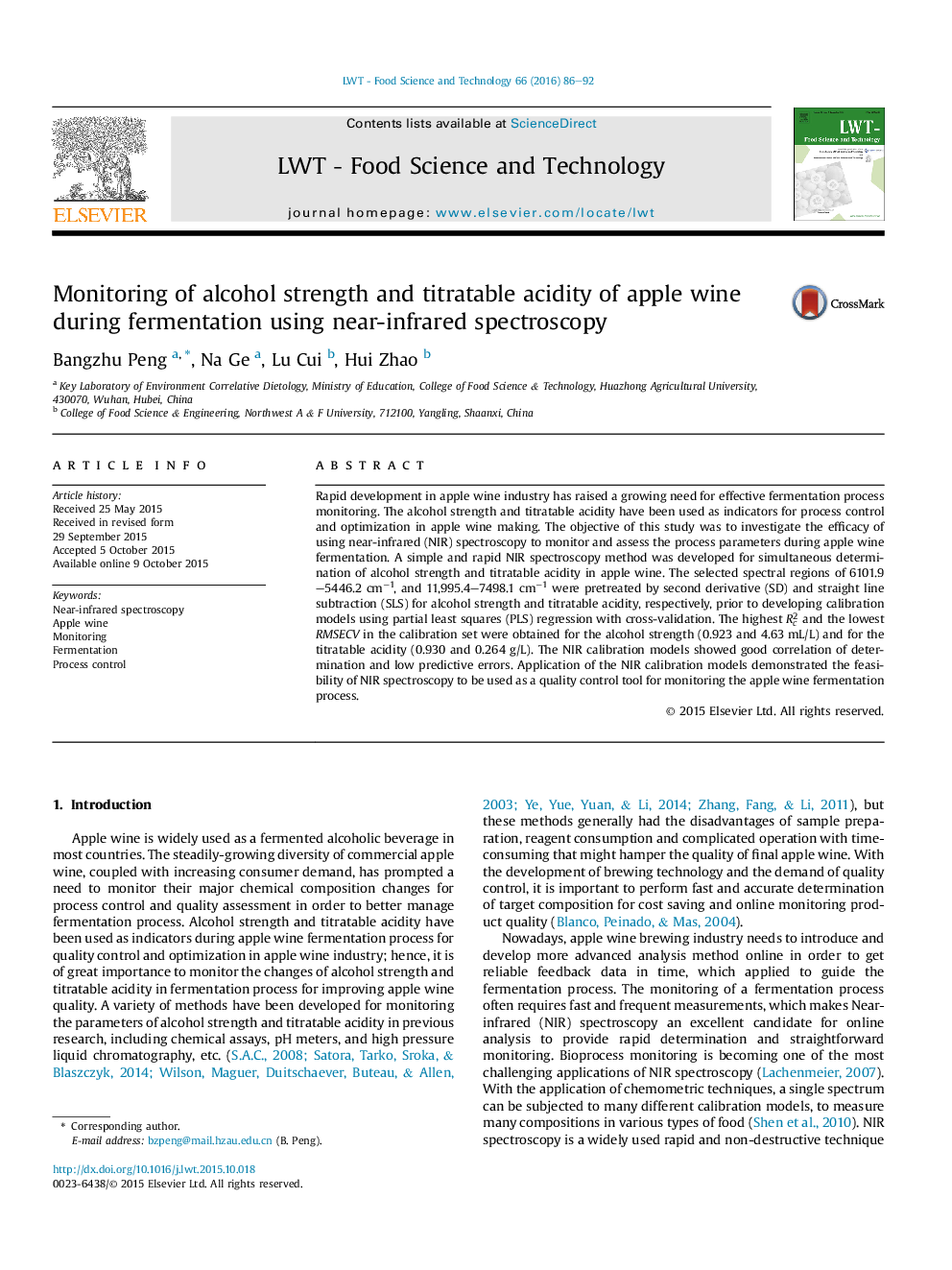| Article ID | Journal | Published Year | Pages | File Type |
|---|---|---|---|---|
| 6400883 | LWT - Food Science and Technology | 2016 | 7 Pages |
Abstract
Rapid development in apple wine industry has raised a growing need for effective fermentation process monitoring. The alcohol strength and titratable acidity have been used as indicators for process control and optimization in apple wine making. The objective of this study was to investigate the efficacy of using near-infrared (NIR) spectroscopy to monitor and assess the process parameters during apple wine fermentation. A simple and rapid NIR spectroscopy method was developed for simultaneous determination of alcohol strength and titratable acidity in apple wine. The selected spectral regions of 6101.9-5446.2Â cmâ1, and 11,995.4-7498.1Â cmâ1 were pretreated by second derivative (SD) and straight line subtraction (SLS) for alcohol strength and titratable acidity, respectively, prior to developing calibration models using partial least squares (PLS) regression with cross-validation. The highest Rc2 and the lowest RMSECV in the calibration set were obtained for the alcohol strength (0.923 and 4.63Â mL/L) and for the titratable acidity (0.930 and 0.264Â g/L). The NIR calibration models showed good correlation of determination and low predictive errors. Application of the NIR calibration models demonstrated the feasibility of NIR spectroscopy to be used as a quality control tool for monitoring the apple wine fermentation process.
Related Topics
Life Sciences
Agricultural and Biological Sciences
Food Science
Authors
Bangzhu Peng, Na Ge, Lu Cui, Hui Zhao,
